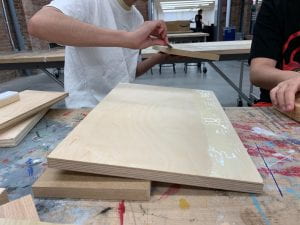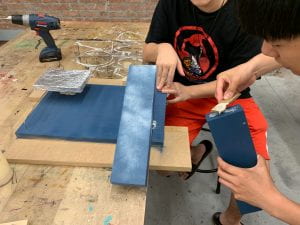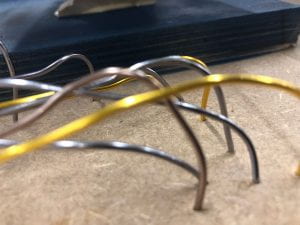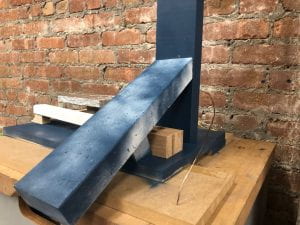Hudson Yards is being planned to be “Tomorrow’s City Today”. “Hudson
Yards represents the 21st century, and Battery Park City represents the end of the
20th century,” said Mitchell L. Moss, a professor of urban policy and planning at
New York University. “They are just totally different.” It will become the cultural
center of Manhattan’s New West Side. A template for the future of cities, this new
neighborhood which has not only changed the impression of New York towards
the world, but also the way of how New York think about the world. It has a
special and good location, makes it will be the best developed cultural, business
and supervise tourism exchange. However, why this area was chosen with such
future proposals.
Hudson Yards is a 28-acre mixed-use development on Manhattan’s far West
Side, bound by 34 th and 30 th street to the north and south, and by Tenth Avenue and
the West Side Highway to the east and west. This area is divided into two parts.
The first phase, Eastern Yard, will be eight new buildings including residential and
commercial skyscrapers, public gardens, a massive shopping mall, and the Shed
cultural center. The Western Yard, on the other hand, will have an additional
residential, office, and retail space, as well as elementary school. After 12 years of
planning and six of construction, Hudson Yards is composted by 2025,
Hudson Yards will be the core of Manhattan’s finical, top elites, shopping
gathering, and residences of New West Side, as well as the template for the future
of cities. The reason why it has the advantages of being the most prosperous area
in the future is about its profound history, wide undeveloped space, and the
convenient location. A landmark cannot be made in one day.
The Hudson Yards is currently being transformed into the Hudson Yards
megaproject has functioned as many things in the city’s 400-year history, this area
before trains ran alongside pedestrian and other traffic, frequently leading to
carnage and the nickname “Death Avenue.” The grade-level tracks were replaced
by the freight-carrying High Line in the 1930s. The interesting design Mayor
George Opdyke cited New Yorkers’ propensity to jaywalk as a reason to keep the
train cars together and persons desirous of crossing a railroad track will wait for
the rapid passage of a train of cars without making an attempt to pass over. It
seems very dangerous, so in 1910 New York Central Railroad empire change the
situation.












